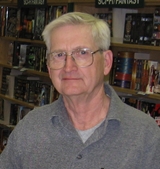The North Sea and Holland
Sunday morning we woke to much improved weather conditions although my stomach still felt a little queasy. After a few Gravol pills I did feel better, but I was extremely upset to find out I was the only woos in the family, my wife claimed she had felt no discomfort due to the rough seas. However, she was not interested in joining me on what would become a regular routine for me walking the SunDeck for an hour every morning. The ship continued to fight its way against a strong head wind, and when I was on the starboard side of the ship I felt as if I were climbing a steep hill, but I had to scramble to keep my footing on the water drenched down hill ramble on the port side.
We were scheduled to arrive in Amsterdam at 9 am, but due to the strong winds, the captain announced that our ETA was going to be much later, which gave us the opportunity to have a leisurely breakfast, and for me to take advantage of the first of the patient-centered educational sessions. Over the next two weeks, the excellent assistance that I had received through the Healthy Heart Programme at ST. Paul’s Hospital in Vancouver, BC after my heart attack, was reinenforced by the two doctors along with professional advice in heart smart cooking, fitness classes, and other related forums.
About mid-morning our ship steered between two islands, which we learned were part of a chain of islands known as the Frisian or Wadden Islands, and entered the Waddenzee or as we call it the Wadden Sea.
First view of Holland’s Coastline
The Wadden Sea lies between the coast of north-western continental Europe and the range of Wadden Islands and forms a shallow body of water bordered by tidal flats and wetlands.
View of Wadden Sea Coastline
A short distance further took us to a lock that would allow us to pass through the Afsluitdijk (Enclosure Dam). This dam was constructed over a period of 6 years beginning in 1927. It is 32 km long, 90 metres wide and rises 7.25 meters above sea-level, and is a major causeway between North Holland province and Friesland province. We passed through the lock and entered a huge lake. Once part of the Waddenzee, the IJsselmeer is now a beautiful fresh water lake fed by the River IJssel as well as many other smaller rivers and streams. Its coastlines are lined with wet lands, beaches, farms and industries.
Wet lands
We entered a much smaller lake the Markermeer and approached our next port of call Oostelijke Handelskade, which is just a few kilometres from the city of Amsterdam.
Oostelijke Handelskade
If we would have had more time we could have taken the twenty-minute walk into Amsterdam, but instead we left the port on our scheduled bus tour.
Amsterdam
Inner Harbour
After only a brief visit to the city, we took a picturesque route north.
The guidebook on Holland states: If you come to the Netherlands expecting to find its residents shod in wooden shoes, you are years too late; if you are looking for windmills at every turn, you are looking in the wrong direction. The book was right, we saw very few people wearing people wearing wooden shoes, but we did get to see the craftsmanship that goes into every shoe made. There are thousands of wooden shoes or klompens manufactured every year in Holland either by mechanical means or by hand by a klompenmaker who takes a block of white wood and whittles the exterior with a sharp hatchet. Different varieties of wood such as willow, birch, beech, poplar or alder can be used. Once he has the outside shaped to his satisfaction then he proceeds to the inside of the shoe. He begins first by drilling two holes with an auger, then gouges out the inside shape with a variety of different shaped chisels. The pair of clogs then go to the finishers where they receive the final coatings and designs.
Klompen Factory
 And yes we didn’t see a windmill at every turn, but we did see enough to satisfy our curiosity.
And yes we didn’t see a windmill at every turn, but we did see enough to satisfy our curiosity.
We also beautiful churches and tour boats in the canals.
We visited a quaint old cheese factory where we were shown the process of making cheese. We saw how the curds are extracted from curdled milk and pressed into moulds. Once the cheese is moulded it is inserted into a brine bath for several days, which helps it to mature into the delicious product that we were able to test and purchase in the shops. The cheese we tried was an Edam, which is made from skim milk unlike the whole milk they use farther south in Gouda.
Cheese Farm
We arrived at the lovely old fishing village of Volendam where we had the opportunity to absorb the feeling of Holland’s wonderful history.
Interior of quaint hotel in Volendam
Cobbled Streets of Village
A ferry ride across one of the country’s many canals brought us to Marken a colourful village where many of the residents greeted us wearing traditional costumes.
Fishing Village
Next time Dover and London

















Written by 31leonard
Leave a comment